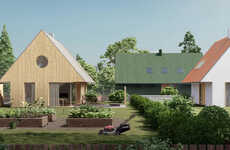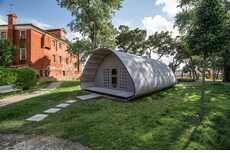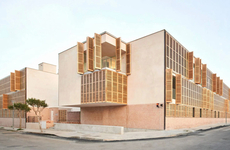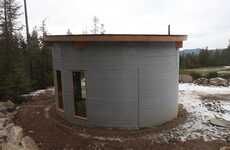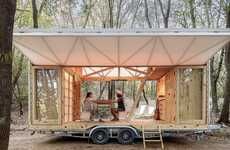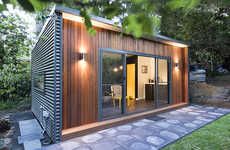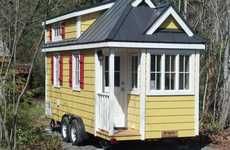
This Low-Income Home is Made from Loc Concrete and Wood
Christopher Magsambol — October 25, 2015 — Art & Design
References: casasmelhoradas & archdaily
The Royal Danish Academy of Fine Arts School built an affordable housing prototype in Maputo, Mozambique that used traditional material from the area. As part of the Casas Melhoradas research project, the team reinterpreted the way typical houses are built in the area using wood and corrugated iron sheet or concrete blocks.
In combining these two elements, the new housing prototype has a heavy concrete base with a light two-storey wooden house built on top of it. The affordable housing project also incorporated balconies to create a greater connection to the outside for the higher floors. The affordable housing prototype used local wood, local craftsmen and carpenters to create prefabricated parts. The project hopes to combat the city's rapid horizontal growth and provide practical options for vertical housing.
In combining these two elements, the new housing prototype has a heavy concrete base with a light two-storey wooden house built on top of it. The affordable housing project also incorporated balconies to create a greater connection to the outside for the higher floors. The affordable housing prototype used local wood, local craftsmen and carpenters to create prefabricated parts. The project hopes to combat the city's rapid horizontal growth and provide practical options for vertical housing.
Trend Themes
1. Local Material Utilization - The use of traditional and sustainable materials in affordable housing prototypes presents an opportunity to promote local industries and reduce environmental impact.
2. Prefabrication Techniques - Implementing prefabrication methods in affordable housing construction allows for faster and more cost-effective building processes, creating potential for disruptive innovation in the construction industry.
3. Vertical Housing Solutions - Exploring vertical housing options in densely populated areas can address rapid urban growth and provide practical solutions for affordable housing needs.
Industry Implications
1. Construction - The construction industry can explore the use of local materials and prefabrication techniques to create more sustainable and affordable housing options.
2. Timber Industry - The timber industry can benefit from the increased demand for local wood in affordable housing prototypes, driving innovation in sustainable forestry practices.
3. Real Estate Development - Real estate developers can tap into the market for vertical housing solutions, offering innovative and affordable housing options in densely populated areas.
5
Score
Popularity
Activity
Freshness



